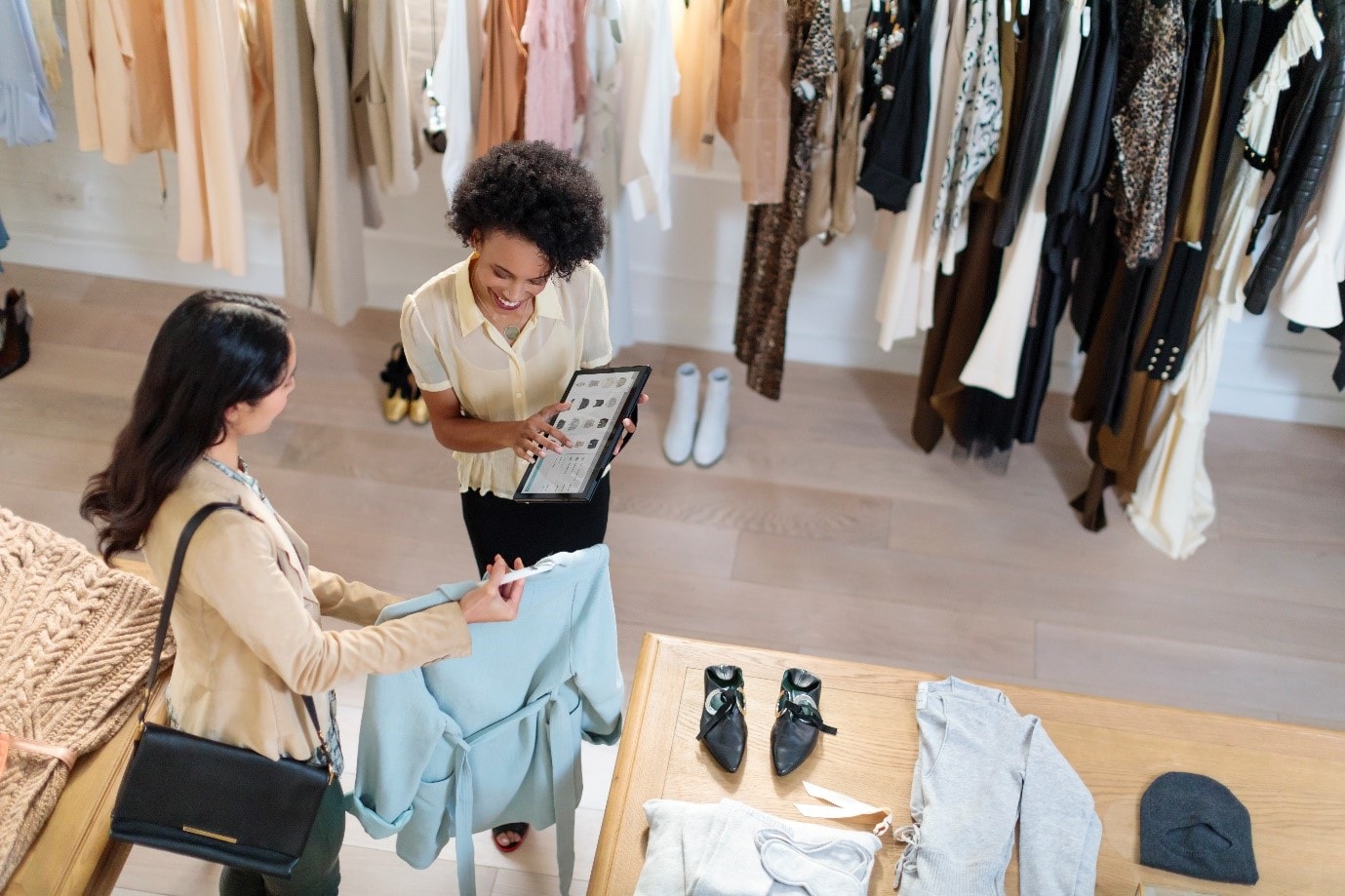26 April 2019
Technology is enabling new forms of shopping behaviours and experiences that brick-and-mortar retailers can take advantage of to drive revenue. In our latest blog, read four ways technology is enabling innovative, in-store experiences.
With the rise of ecommerce and online shopping, retailers need to reimagine the in-store experience to remain relevant. Technology is also enabling new forms of shopping behaviours and experiences that retailers can take advantage of to drive revenue. The possibilities are almost endless, but here are four new developments that illustrate the need for more innovative in-store experiences.
Blurred lines
Customers increasingly see your physical store and online store as part of the same thing. This has led to two new practices in the way consumers make purchases:
- Showrooming affects bricks-and-mortar stores, with a recent study by online comparison site Finder showing almost one in three people admit to viewing a product in-store before purchasing it online at a cheaper price.
- Webrooming involves viewing products online before making a purchase in-store to save on time and delivery costs. Research by Google found that 82% of shoppers consult their phones on purchases they’re about to make in-store.
Retailers need to embrace the realities of both showrooming and webrooming. Regardless of the customer’s original intention for visiting the store, retailers need to use the customer’s physical presence as an opportunity to build the overall brand of the business through memorable and engaging experiences. Whether they make a purchase that day or not, they should leave with a positive impression.
Layered loyalty
Thanks to their ability to collect new sources of data, retailers can generate brand loyalty more effectively by creating more engaging and personalised services. Each time a customer makes a purchase or interacts with a particular channel, data integrates into a singular profile, giving retailers the ability to deliver contextualised in-store experiences.
For retailers and hospitality businesses, there is a real opportunity to drive in-store visits and purchases by incorporating the concepts of gamification and events. By doubling the number of loyalty points a customer accrues from an in-store purchase, and by offering in-store only pricing for sales events, retailers can create far more memorable experiences for their customers.
Leveraging location
Beacon networks that use mobile, Bluetooth, and Internet of Things (IoT) devices now enable retailers to understand exactly where a customer is physically within their store, allowing them to:
- deliver personalised messages to mobile apps
- adjust signage to display customised messages
- determine the optimum store layout for product positioning
Taking things one step further with beacons and IoT devices, retail spending on IoT technology will increase to $5.3 billion to fuel what GlobalData has called “ambient commerce” – a new form of shopping which makes use of sensors and advanced AI, to help customers select and pay for their goods, without the need for keyboards or cash registers.
Reimagining retail reality
Augmented reality (AR) and virtual reality (VR) have yet to fully realise their potential, but in-store retail could reap major benefits from these burgeoning technologies. According to Gartner, 100 million consumers will shop in-store using AR tech by 2020, and 46% of retailers surveyed, plan to deploy either AR or VR solutions to meet customer service experience requirements.
This further demonstrates the rapidly changing playing field for retailers who hope to compete with well-resourced digital competitors who already have a foothold in these advanced technologies. Staying relevant will rely on your ability to reimagine the retail experience from the ground up.
Retailers need innovative and reliable systems in place to support the new demands of customers. For 30 years, New Zealand retail chains have been turning to Lexel to manage their technology, leaving them free to focus on better serving their customers.
Using Gartner’s run-grow-transform (RGT) model to implement HP Engage point of sale systems with the support of Lexel can help you stay relevant in an omnichannel world, and deliver the experiential environment that your customers desire.
Lexel can integrate the new HP Engage POS system into your stores, offering you an enhanced suite of digital services that are built for the future of retail. Lexel’s ability to offer a top of the line POS system means your stores can upgrade or complement current systems to enhance the customer experience, build brand loyalty and ultimately increase sales.

